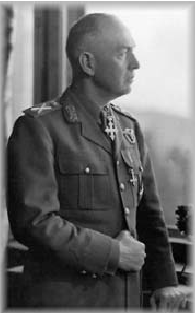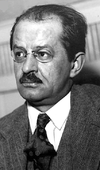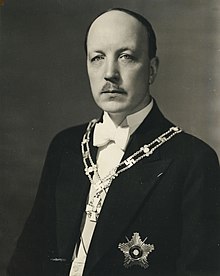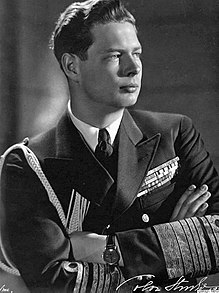This is a more plausible redux of Harry Turtledove's The War that Came Early series, which hypothesize a world in which WWII began eleven months earlier in October of 1938 as opposed to September of 1939. In this redux , there will be no Britain and France making peace with Germany, then allying with them against the USSR and then declaring war on Germany again, as this is all very much implausible.
Some years ago, I created a brainstorming thread for this scenario that this new thread is based on; https://www.alternatehistory.com/fo...f-turtledoves-the-war-that-came-early.400229/
Let me know what you guys think and if anything can be changed or improved.
July 20, 1936 (POD): Spanish Nationalist leader José Sanjurjo listens to his pilot's advice and changes the conditions of his flight back to Spain. Sanjurjo does not die in a plane crash and becomes the leader of the Spanish Nationalists instead of Francisco Franco.

José Sanjurjo
September 29, 1938: Konrad Heinlein is assassinated by gunshot in Berlin by Jaroslav Stribny, the false name of Jan Opletal, a 23 year-old student of the Medical Faculty of the Charles University in Prague. Minutes after the shooting of Heinlein, Opletal is gunned down by officers of the Ordnungspolizei.

Jan Opletal
September 30, 1938: The German government of Adolf Hitler accuses the Czechoslovak government of President Edvard Beneš and Prime Minister Jan Syrový of the assassination of Konrad Heinlein. As a result, the negotiations in Munich between Britain, France, Germany and Italy fall apart and Nazi Germany declares war on and invades Czechoslovakia, thus initiating Fall Grün. As a result, World War II begins.
October 6-15, 1938: The Saar Offensive; France invades and occupies the Saar region of Germany.

French soldiers in the Saar region
October 10, 1938: The British Expeditionary Force (BEF) is sent to France.
October 12, 1938: The USSR sends begins sending aid to Czechoslovakia by plane. The USSR cannot send the Red Army through Poland or Romania.
October 16-19, 1938: Several German border towns are invaded and occupied by France.
October 20, 1938: The Phony War, a period of no major military land operations on the Western Front of World War II, begins.
October 22, 1938: France and Great Britain enter the Spanish Civil War on the side of the Republicans, with both nations beginning to send armaments and munitions to the Spanish Republicans. As a result, Nazi Germany officially enters the Spanish Civil War on the side of the Nationalists.
November 3, 1938: Prague is captured by the Germans. The Czechoslovak government relocates to Brno.

Hitler in Prague Castle, November 11, 1938, the twentieth anniversary of the end of the Great War
November 16, 1938: The Spanish Republicans win the Battle of the Ebro thanks to French armaments, munitions and soldiers that were sent to the defending republicans.
December 12, 1938: The Kingdom of Hungary under Regent Miklós Horthy and Prime Minister Béla Imrédy joins World War II on the side of Nazi Germany in exchange for the annexation of territory taken by Czechoslovakia from Hungary in the Treaty of Trianon in 1920.
January 8, 1939: Brno is captured by the Germans. The Czechoslovak government relocates to the Slovak city of Bratislava.
January 10, 1939: The Republic of Carpatho-Ukraine is declared by Avgustyn Voloshyn in Khust.

Avgustyn Voloshyn
January 12, 1939: Hungary invades the Republic of Carpatho-Ukraine.
January 15, 1939: Hungary annexes the Republic of Carpatho-Ukraine. Avgustyn Voloshyn is captured by the Hungarian army.
January 22, 1939: The Spanish Nationalists under General Sanjurjo begin besieging Gibraltar with the help of the German Condor Legion. Italian forces do not participate, as Mussolini does not yet want to become involved in the larger Second World War.
February 5, 1939: Avgustyn Voloshyn is executed by the Hungarian army.
March 6, 1939: Bratislava is captured by the Germans. The Czechoslovak government relocates to Banská Bystrica.
March 25, 1939: The Beck-Ribbentrop Pact is signed in Berlin, with the permission of President Ignacy Mościcki and Marshal Edward Rydz-Śmigły of Poland. The neutrality of Poland and the Free City of Dazing in World War II are to be respected by Germany, while the Czech city of Zaolzie is to be annexed by Poland after the fall of Czechoslovakia. Hitler still wants to invade Dazing and Poland, and then the Soviet Union, and is merely biding his time.

Ribbentrop and Beck in Berlin, March 25, 1939
April 8, 1939: Czechoslovakia surrenders to Nazi Germany. Nazi Germany annexes the Sudetenland and the rest of Czechia, the latter of which becomes the Protectorate of Bohemia and Moravia and Reich Protector Konstantin von Neurath and the collaborationist leaders of State President Emil Hácha and Prime Minister Rudolf Beran. Hungary annexes all of the land it lost in the 1920 Treaty of Trianon, including Southern Slovakia. Poland annexes Zaolzie, Slovakia becomes the Slovak Republic, a German client state under President and Prime Minister Jozef Tiso, leader of the Slovak People's Party. The Czechoslovak government relocates to London and becomes the Czechoslovak government-in-exile.

Map of the annexation of Czechoslovakia, 1939
With the fall of Czechoslovakia, the German Reich spends the next few months consolidating its gains and rebuilding and repurposing the industry of the Czech lands, much of which has been destroyed during the German invasion of Czechoslovakia, to be used by the German war machine. As a result, the Phony War continues.
April 20, 1939: The 50th birthday of Adolf Hitler is celebrated in a massive military parade in Berlin.

The military parade for Hitler's 50th birthday in Berlin
April 29-August 10, 1939: With German infantry and armored reinforcements being sent west from the former Czechoslovak front, the German Wehrmacht successfully attacks and repulses all French and BEF soldiers in the German border towns and sends them back across the French border after over three months of stalemate.
May 1, 1939: On May Day, the government of the Soviet Union under Premier Joseph Stalin publicly denounces the Polish government and accuses the Polish government of oppressing the Ukrainian and Belorussian residents of the Second Polish Republic, most of whom live in the Eastern Voivodeships of the Second Polish Republic bordering the Soviet Union. Stalin also accuses the Polish government of being a secret ally of Nazi Germany.
May 11, 1939: The Battles of Khalkhin Gol begin along the Khalkha River in the Mongolian People's Republic, with the battles being fought between the Soviet Union with Mongolia and the Empire of Japan with the Empire of Manchukuo.
June 8, 1939: The Soviet government, represented by Foreign Minister Vyacheslav Molotov, sends an ultimatum to the government of the Second Polish Republic and Polish Foreign Minister Jozef Beck. The ultimatum, known as the Molotov Ultimatum, demands that the Second Polish Republic hands of the majority-Ukrainian regions of Western Ukraine and Volyhnia and the majority-Belarusian region of Western Belarus to the Union of Soviet Socialist Republics. If no response is given by the end of the year, it will mean war between the two nations.

Vyacheslav Molotov
June 15, 1939: On the orders of Marshal Edward Rydz-Śmigły, now the de-facto leader of Poland, and in response to the Soviet ultimatum, the Polish military is mobilized in preparation for a war against the Soviet Union, and to lesser extent, in the case of war against Nazi Germany. In spite of the Beck-Ribbentrop Pact, there still exists a lot of tension between Germany and Poland as a result of the status of the Free City of Danzig, German desires for the Danzig corridor and the status of ethnic Germans in Poland.
June 24, 1939: During the Spanish Civil War, the long deadlocked Madrid front becomes active once again, with both sides having moved reinforcements to the area and with skirmishing having now begun.

Edward Rydz-Śmigły
July 1, 1939: The Polish government officially refuses the Soviet ultimatum. As a result, the Soviet Union declares war on the Second Polish Republic.
Some years ago, I created a brainstorming thread for this scenario that this new thread is based on; https://www.alternatehistory.com/fo...f-turtledoves-the-war-that-came-early.400229/
Let me know what you guys think and if anything can be changed or improved.
Harry Turtledove's The War that Came Early Redux
July 20, 1936 (POD): Spanish Nationalist leader José Sanjurjo listens to his pilot's advice and changes the conditions of his flight back to Spain. Sanjurjo does not die in a plane crash and becomes the leader of the Spanish Nationalists instead of Francisco Franco.
José Sanjurjo
September 29, 1938: Konrad Heinlein is assassinated by gunshot in Berlin by Jaroslav Stribny, the false name of Jan Opletal, a 23 year-old student of the Medical Faculty of the Charles University in Prague. Minutes after the shooting of Heinlein, Opletal is gunned down by officers of the Ordnungspolizei.
Jan Opletal
September 30, 1938: The German government of Adolf Hitler accuses the Czechoslovak government of President Edvard Beneš and Prime Minister Jan Syrový of the assassination of Konrad Heinlein. As a result, the negotiations in Munich between Britain, France, Germany and Italy fall apart and Nazi Germany declares war on and invades Czechoslovakia, thus initiating Fall Grün. As a result, World War II begins.
October 6-15, 1938: The Saar Offensive; France invades and occupies the Saar region of Germany.
French soldiers in the Saar region
October 10, 1938: The British Expeditionary Force (BEF) is sent to France.
October 12, 1938: The USSR sends begins sending aid to Czechoslovakia by plane. The USSR cannot send the Red Army through Poland or Romania.
October 16-19, 1938: Several German border towns are invaded and occupied by France.
October 20, 1938: The Phony War, a period of no major military land operations on the Western Front of World War II, begins.
October 22, 1938: France and Great Britain enter the Spanish Civil War on the side of the Republicans, with both nations beginning to send armaments and munitions to the Spanish Republicans. As a result, Nazi Germany officially enters the Spanish Civil War on the side of the Nationalists.
November 3, 1938: Prague is captured by the Germans. The Czechoslovak government relocates to Brno.
Hitler in Prague Castle, November 11, 1938, the twentieth anniversary of the end of the Great War
November 16, 1938: The Spanish Republicans win the Battle of the Ebro thanks to French armaments, munitions and soldiers that were sent to the defending republicans.
December 12, 1938: The Kingdom of Hungary under Regent Miklós Horthy and Prime Minister Béla Imrédy joins World War II on the side of Nazi Germany in exchange for the annexation of territory taken by Czechoslovakia from Hungary in the Treaty of Trianon in 1920.
January 8, 1939: Brno is captured by the Germans. The Czechoslovak government relocates to the Slovak city of Bratislava.
January 10, 1939: The Republic of Carpatho-Ukraine is declared by Avgustyn Voloshyn in Khust.
Avgustyn Voloshyn
January 12, 1939: Hungary invades the Republic of Carpatho-Ukraine.
January 15, 1939: Hungary annexes the Republic of Carpatho-Ukraine. Avgustyn Voloshyn is captured by the Hungarian army.
January 22, 1939: The Spanish Nationalists under General Sanjurjo begin besieging Gibraltar with the help of the German Condor Legion. Italian forces do not participate, as Mussolini does not yet want to become involved in the larger Second World War.
February 5, 1939: Avgustyn Voloshyn is executed by the Hungarian army.
March 6, 1939: Bratislava is captured by the Germans. The Czechoslovak government relocates to Banská Bystrica.
March 25, 1939: The Beck-Ribbentrop Pact is signed in Berlin, with the permission of President Ignacy Mościcki and Marshal Edward Rydz-Śmigły of Poland. The neutrality of Poland and the Free City of Dazing in World War II are to be respected by Germany, while the Czech city of Zaolzie is to be annexed by Poland after the fall of Czechoslovakia. Hitler still wants to invade Dazing and Poland, and then the Soviet Union, and is merely biding his time.
Ribbentrop and Beck in Berlin, March 25, 1939
April 8, 1939: Czechoslovakia surrenders to Nazi Germany. Nazi Germany annexes the Sudetenland and the rest of Czechia, the latter of which becomes the Protectorate of Bohemia and Moravia and Reich Protector Konstantin von Neurath and the collaborationist leaders of State President Emil Hácha and Prime Minister Rudolf Beran. Hungary annexes all of the land it lost in the 1920 Treaty of Trianon, including Southern Slovakia. Poland annexes Zaolzie, Slovakia becomes the Slovak Republic, a German client state under President and Prime Minister Jozef Tiso, leader of the Slovak People's Party. The Czechoslovak government relocates to London and becomes the Czechoslovak government-in-exile.
Map of the annexation of Czechoslovakia, 1939
With the fall of Czechoslovakia, the German Reich spends the next few months consolidating its gains and rebuilding and repurposing the industry of the Czech lands, much of which has been destroyed during the German invasion of Czechoslovakia, to be used by the German war machine. As a result, the Phony War continues.
April 20, 1939: The 50th birthday of Adolf Hitler is celebrated in a massive military parade in Berlin.
The military parade for Hitler's 50th birthday in Berlin
April 29-August 10, 1939: With German infantry and armored reinforcements being sent west from the former Czechoslovak front, the German Wehrmacht successfully attacks and repulses all French and BEF soldiers in the German border towns and sends them back across the French border after over three months of stalemate.
May 1, 1939: On May Day, the government of the Soviet Union under Premier Joseph Stalin publicly denounces the Polish government and accuses the Polish government of oppressing the Ukrainian and Belorussian residents of the Second Polish Republic, most of whom live in the Eastern Voivodeships of the Second Polish Republic bordering the Soviet Union. Stalin also accuses the Polish government of being a secret ally of Nazi Germany.
May 11, 1939: The Battles of Khalkhin Gol begin along the Khalkha River in the Mongolian People's Republic, with the battles being fought between the Soviet Union with Mongolia and the Empire of Japan with the Empire of Manchukuo.
June 8, 1939: The Soviet government, represented by Foreign Minister Vyacheslav Molotov, sends an ultimatum to the government of the Second Polish Republic and Polish Foreign Minister Jozef Beck. The ultimatum, known as the Molotov Ultimatum, demands that the Second Polish Republic hands of the majority-Ukrainian regions of Western Ukraine and Volyhnia and the majority-Belarusian region of Western Belarus to the Union of Soviet Socialist Republics. If no response is given by the end of the year, it will mean war between the two nations.
Vyacheslav Molotov
June 15, 1939: On the orders of Marshal Edward Rydz-Śmigły, now the de-facto leader of Poland, and in response to the Soviet ultimatum, the Polish military is mobilized in preparation for a war against the Soviet Union, and to lesser extent, in the case of war against Nazi Germany. In spite of the Beck-Ribbentrop Pact, there still exists a lot of tension between Germany and Poland as a result of the status of the Free City of Danzig, German desires for the Danzig corridor and the status of ethnic Germans in Poland.
June 24, 1939: During the Spanish Civil War, the long deadlocked Madrid front becomes active once again, with both sides having moved reinforcements to the area and with skirmishing having now begun.
Edward Rydz-Śmigły
July 1, 1939: The Polish government officially refuses the Soviet ultimatum. As a result, the Soviet Union declares war on the Second Polish Republic.
Last edited:











